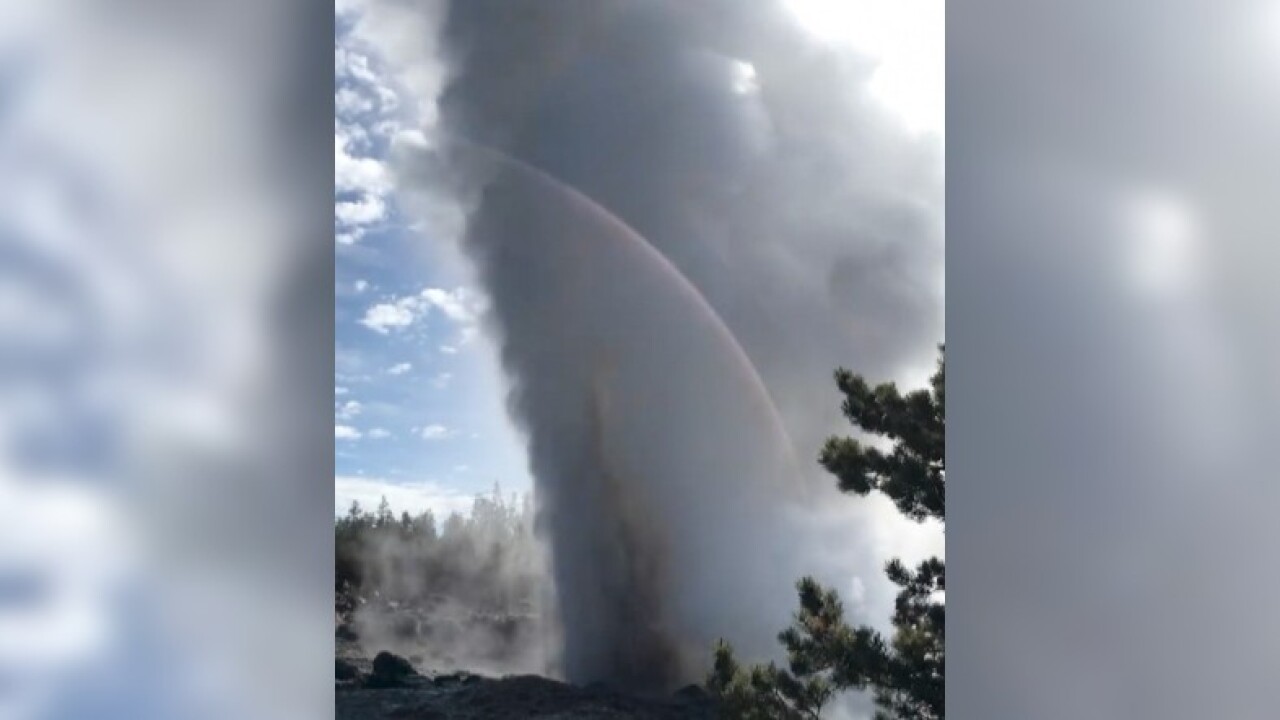BOZEMAN — The world’s tallest geyser—Steamboat Geyser in Yellowstone National Park—did not have a major eruption for more than two months. That’s the longest time between eruptions since March of 2018.
For three and a half years dedicated geyser watchers and lucky park visitors have thrilled at Steamboat’s spectacular eruptions. It can shoot water, steam, mud, and rock 300 feet or more into the air.
“Well, it looks like Steamboat’s slowing down,” said Dr. Mike Poland, the Scientist in Charge at the Yellowstone Volcano Observatory.
On September 11, 2021, Steamboat had a major eruption. That was the first one in 65 days. Up until May, the geyser had been erupting, on average, every 5 to 10 days since it came back to life in March of 2018.
Poland said, “This is one of those aspects of geysers. Most of them are really unpredictable, so you have to enjoy it while you can.”
But Steamboat is having a good long run. It erupted 32 times in 2018, 48 in 2019, and another 48 in 2020, including one huge eruption that year estimated at 355 feet. But so far this year, Steamboat has had just 14 major eruptions.
Poland admitted that scientists are stumped. He said, “There’s no clear sign of what’s different now versus the way it was five years ago.”
Or, for that matter a century ago. Steamboat went dormant for fifty years, from 1911 to 1961.
“One thing we do know is it has to have something to do with the sub-surface plumbing system, the geyser conduits. Whether or not they’re constricted or more open. And, that’s something that’s very difficult to understand because we just can’t see down there.” Said Poland.
But he does have a hunch.
“I still feel like water availability has to have something to do with it. Having high levels of groundwater, because there was a lot more rain and snow a few years ago than there has been the last couple of years,” said the scientist.
Poland also told MTN News that if Steamboat does go dormant it will create an opportunity for scientists who will be able to compare the giant cache of data they have collected during the last three years of eruptions to what they see when the geyser is not erupting.
“We don’t know if there are precursory signals for some of these regular geysers, and how neat would that be if we were able to identify, 'Ah yes, there are some precursors,' and this is something we could look for in the future.” Said Poland.
He said he’s not ready yet to say the geyser is going dormant, and probably won’t know for sure until after it has already happened.
Geyser watchers continue to flock to the Norris Geyser Basin where Steamboat is located as they have been for the last three and a half years. With all the added traffic, the Park Service created more parking spaces out along the Grand Loop Road. The Park has also re-routed traffic in the Norris parking lot to keep vehicles moving along.
If Steamboat goes dormant, it’s hard to say if that will reduce traffic. But, Norris has always been a popular spot and it is home to the most seismically active geyser basin. So, even if the big geyser isn’t going off, there’s a good chance the area will remain a top visitor attraction.





